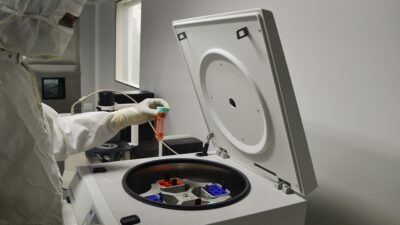In recent years, unmanned systems, colloquially known as drones, have revolutionized the aerospace industry. Once primarily associated with military applications, drones have now found widespread utility across various sectors, significantly transforming how we approach tasks ranging from surveillance to delivery. As technology continues to evolve, the role of these systems is expected to expand even further, presenting both opportunities and challenges.
Evolution of Unmanned Systems
The inception of drone technology can be traced back to military reconnaissance missions during World War I and II. However, it wasn’t until the late 20th century that advances in technology, particularly in computing, miniaturization, and communication, enabled the development of more sophisticated unmanned systems. Today’s drones are equipped with high-definition cameras, GPS, and advanced sensors, allowing for complex operations beyond simple remote control.
Applications Across Various Industries
1. Military and Defense
The military remains one of the largest users of drones, utilizing them for intelligence, surveillance, reconnaissance (ISR), and targeted missions. The ability to gather valuable real-time data without risking human lives has made unmanned systems invaluable in conflict zones. Drones like the MQ-9 Reaper have become synonymous with modern warfare, capable of conducting precision strikes and gathering crucial battlefield intelligence.
2. Commercial Aviation
Commercial applications of unmanned systems are burgeoning, with many industries leveraging drone technology for enhanced efficiency. In agriculture, drones assist in crop monitoring, pest management, and precision farming, helping farmers make data-driven decisions. The construction industry uses drones for site surveys, providing accurate topographical maps and monitoring project progress effectively.
3. Delivery Services
Companies like Amazon and Google are exploring drone technology for logistics and delivery services. By enabling faster and more efficient delivery systems, drones could transform the way goods are transported, particularly in urban environments. Regulatory challenges remain, but pilot programs are paving the way for broader adoption.
4. Emergency Response and Disaster Management
Drones have proven crucial in crisis scenarios. Their ability to access areas that may be unsafe for humans enables rapid assessments during natural disasters, such as hurricanes and wildfires. Drones can provide real-time imagery to emergency services, aiding in search and rescue operations.
5. Environmental Monitoring
Unmanned aerial vehicles (UAVs) are increasingly employed in environmental monitoring, tracking wildlife, assessing ecosystems, and monitoring deforestation. Drones can fly over inaccessible regions, collecting data that informs conservation efforts and environmental policies.
Technological Advancements
The rapid advancement of drone technology has led to improvements in flight time, payload capacity, and autonomous capabilities. Key developments include:
-
Artificial Intelligence (AI) Integration: AI algorithms are enhancing drones’ ability to navigate autonomously and analyze data in real-time.
-
Swarming Technology: Inspired by nature, "swarm" technology allows multiple drones to operate in coordinated groups, enhancing efficiency in tasks such as monitoring vast areas or conducting search missions.
- Battery and Energy Solutions: Improved battery life and the exploration of alternative energy sources, such as solar power, are addressing endurance limits, enabling longer flight times and extended operational ranges.
Regulatory Challenges
Despite their growing presence, the integration of drones into everyday airspace poses significant regulatory challenges. Authorities, such as the Federal Aviation Administration (FAA) in the United States, are grappling with issues related to air traffic management, safety standards, privacy concerns, and cybersecurity risks. Striking a balance between innovation and regulation is essential to ensure that the benefits of unmanned systems can be fully realized without compromising safety and public trust.
The Future: Drones and Beyond
The future of unmanned systems in aerospace is not limited to traditional drone applications. As technology continues to advance, we may witness the emergence of a new era of aerospace innovation. Concepts like Urban Air Mobility (UAM), which envisions electric vertical takeoff and landing (eVTOL) vehicles for urban transportation, could reshape urban landscapes.
Moreover, advancements in remote sensing and data analytics may lead to new applications in AI-controlled aerial surveys, meteorology, and beyond, positioning unmanned systems as pivotal players in addressing global challenges such as climate change and urbanization.
Conclusion
Drones and unmanned systems are not just a passing trend; they represent a significant shift in how we perceive aerospace technology. With their diverse applications and ongoing advancements, drones are redefining industries, enhancing efficiencies, and opening new possibilities. As we continue to explore the uncharted territory of unmanned systems, collaboration among stakeholders—regulators, technology developers, and end-users—will be crucial in navigating the complexities of this evolving field. The journey into the future of aerospace is exciting, and it’s only just begun.

